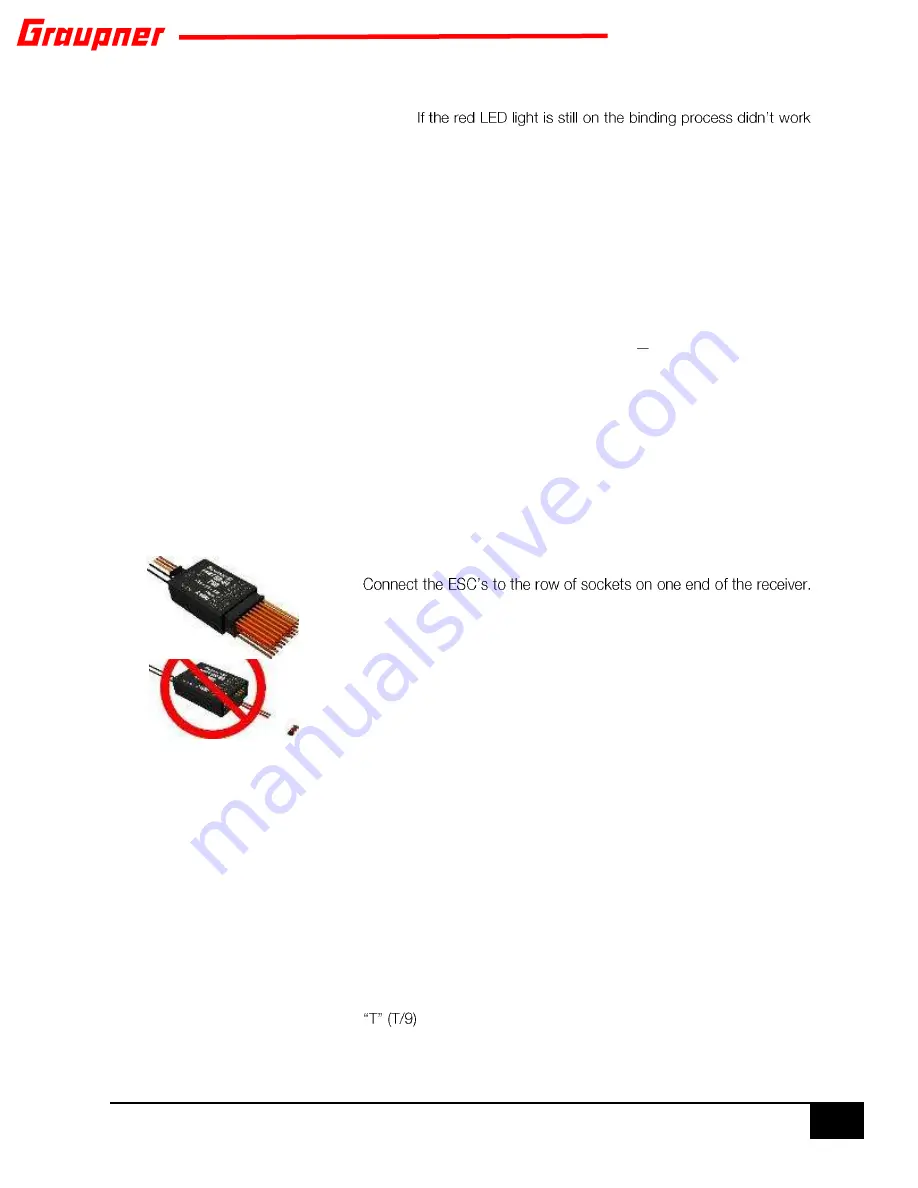
INNOVATION & TECHNOLOGY
REV 1
12
properly. In this case repeat the above procedure.
Features
Multicopter stabilization on 3 axes
Natural flight performance
Excellent stabilization for aerobatic figures
Easy setup of the PID gyro settings
Over-the-air setup by using Graupner HoTT radio
Altimeter sensor for vario and altitude
Technical Data
Operating temperature: - 15..+70 °C (-15°
70° C)
Dual full range antennas: 145 mm
Total weight approx.: 14 g
Frequency: 2400 ... 2483.5 MHz
Range approx.: 4000 m
Dimensions ca.: 46 x 21 x 14 mm
Modulation: 2.4 GHz FHSS
Current consumption: 70 mA
Operating voltage: (2,5) 3,6 ... 8,4 V
Connections
The connectors are polarised: note the small chamfers on one side.
Never use force! The connectors should be inserted gently. The
polarity is also printed on the receiver; the negative wire (-) is brown or
black, the positive wire (+) is red and the signal wire is orange or white.
The socket for channel 8 (K6 in GR 18) can also be programmed to
provide a (digital) sum signal (see next section).
Battery Power
The receiver does not have a specific socket for connecting the
battery. We recommend that you connect the power source to the
socket(s) close to the servos already connected to the receiver. If you
wish to connect multiple separate batteries, the batteries must be of
the same nominal voltage and capacity. Never connect batteries of
different type, or packs with a different state of charge as this can
cause a short-circuit. If you encounter this problem, we recommend
the use of a voltage stabiliser unit (e.g. PRX-5A receiver power supply,
Order No. 4136) between the batteries and the receiver.
Telemetry or channel (T/9) socket
The optional telemetry sensors are connected to the socket marked
- Telemetry. In addition, the firmware update is performed on
this socket (see below). The socket can also be used as an additional
channel (see below).







































